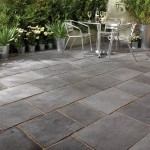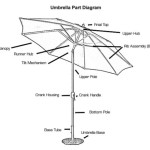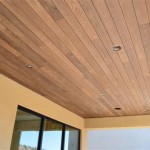How To Clean an Old Concrete Patio
Concrete patios, while durable and long-lasting, are susceptible to the accumulation of dirt, grime, algae, mold, and other unsightly stains over time. Weather exposure, foot traffic, and general neglect can contribute to the degradation of the patio's appearance. Regular cleaning and maintenance are crucial to preserving its aesthetic appeal and preventing further deterioration. This article provides a comprehensive guide on how to effectively clean an old concrete patio, covering various methods and techniques to restore its original luster.
Assessing the Condition of the Patio
Before embarking on any cleaning endeavor, it is imperative to thoroughly assess the condition of the concrete patio. This assessment will help determine the extent of the cleaning required and the most appropriate methods to employ. Start by visually inspecting the entire surface, noting any specific areas of concern.
Identify the types of stains present. Common stains on concrete patios include dirt, grease, oil, rust, mildew, algae, and efflorescence (a white, powdery deposit caused by salt seeping to the surface). The nature of the stain will influence the choice of cleaning agents and techniques.
Examine the concrete for any signs of damage, such as cracks, chips, or spalling (flaking or crumbling of the surface). These issues should be addressed before cleaning, as water and cleaning solutions can exacerbate existing damage. Minor cracks can often be filled with concrete patching compounds, while more extensive damage may require professional repair.
Consider the patio's surroundings. Plants, furniture, and other nearby objects should be protected before cleaning to prevent damage from cleaning solutions or water runoff. Cover sensitive plants with plastic sheeting or tarps, and move furniture to a safe location.
Gathering the Necessary Supplies and Equipment
Once the condition of the patio has been assessed, it is time to gather the necessary supplies and equipment. The specific items needed will depend on the chosen cleaning method, but a basic list includes:
Broom: A stiff-bristled broom is essential for sweeping away loose debris, dirt, and leaves before starting the cleaning process.
Garden Hose: A garden hose with a spray nozzle is needed for rinsing the patio before, during, and after cleaning.
Bucket: A large bucket is required for mixing cleaning solutions.
Scrub Brush: A scrub brush with a long handle is useful for applying cleaning solutions and scrubbing stubborn stains.
Cleaning Solutions: The choice of cleaning solution will depend on the types of stains present. Options include dish soap, trisodium phosphate (TSP), oxygen bleach, vinegar, and commercial concrete cleaners.
Pressure Washer (Optional): A pressure washer can significantly expedite the cleaning process and is particularly effective for removing stubborn stains and algae. However, it is crucial to use caution and avoid excessive pressure, which can damage the concrete surface.
Safety Gear: It is essential to wear appropriate safety gear, including gloves, eye protection, and a dust mask, especially when working with chemicals.
Concrete Sealer (Optional): After cleaning, applying a concrete sealer can help protect the patio from future stains and damage.
Cleaning Methods for Old Concrete Patios
Several cleaning methods can be employed to restore an old concrete patio. The most suitable method will depend on the severity of the staining and the type of stains present. Start with the gentlest method and escalate to more aggressive techniques if necessary.
Simple Soap and Water: This is the mildest and often the first method to try. Mix a small amount of dish soap with water in a bucket. Use a broom or scrub brush to apply the solution to the patio surface, scrubbing thoroughly to loosen dirt and grime. Rinse the patio with a garden hose.
Vinegar and Water Solution: Vinegar is a natural cleaner that can be effective for removing mild stains and algae. Mix equal parts white vinegar and water in a bucket. Apply the solution to the patio, let it sit for 15-20 minutes, and then scrub with a brush. Rinse thoroughly with water.
Trisodium Phosphate (TSP): TSP is a powerful cleaning agent effective for removing grease, oil, and other stubborn stains. However, it is a harsh chemical and should be used with caution. Always wear gloves and eye protection when working with TSP. Mix TSP with water according to the manufacturer's instructions. Apply the solution to the patio, scrub with a brush, and rinse thoroughly with water. Be aware that TSP may be restricted or banned in some areas due to environmental concerns. Check local regulations before using it.
Oxygen Bleach: Oxygen bleach is a gentler alternative to chlorine bleach and is effective for removing mildew, algae, and other organic stains. Mix oxygen bleach powder with water according to the manufacturer's instructions. Apply the solution to the patio, let it sit for 15-20 minutes, and then scrub with a brush. Rinse thoroughly with water. Oxygen bleach is considered more environmentally friendly than chlorine bleach.
Commercial Concrete Cleaners: A wide variety of commercial concrete cleaners are available, specifically formulated for removing different types of stains. Choose a cleaner that is appropriate for the type of stains present on the patio. Follow the manufacturer's instructions carefully. These cleaners often contain stronger chemicals than homemade solutions and may require special disposal procedures.
Pressure Washing: A pressure washer can be an effective tool for cleaning concrete patios, but it is essential to use it properly to avoid damaging the surface. Start with a low-pressure setting and gradually increase the pressure as needed. Hold the nozzle at a distance from the patio surface and use a wide fan spray pattern. Avoid concentrating the pressure in one spot, as this can etch the concrete. Always wear eye protection when using a pressure washer. If using a chemical solution in conjunction with a pressure washer, ensure the pressure washer is compatible with the solution and always follow the manufacturer’s safety guidelines.
Specific Stain Removal Techniques
Some stains require specific removal techniques to achieve optimal results. Here are some tips for removing common stains from concrete patios:
Grease and Oil Stains: Sprinkle baking soda or cornstarch on the stain to absorb the grease or oil. Let it sit for several hours or overnight, then sweep away the powder. Scrub the area with a mixture of dish soap and water or use a commercial degreaser.
Rust Stains: Rust stains can be challenging to remove. Try applying a paste of lemon juice and salt to the stain. Let it sit for several hours, then scrub with a brush and rinse. Alternatively, use a commercial rust remover specifically designed for concrete.
Mildew and Algae: Scrub the affected area with a solution of oxygen bleach and water or a commercial mildew remover. Alternatively, a pressure washer can be effective for removing mildew and algae.
Efflorescence: Efflorescence is caused by salt deposits and can be removed with a solution of water and muriatic acid. However, muriatic acid is a hazardous chemical and should be used with extreme caution. Always wear gloves, eye protection, and a respirator when working with muriatic acid. Follow the manufacturer's instructions carefully and rinse thoroughly with water. Neutralize the area with a baking soda solution after cleaning. Consider hiring a professional for extensive efflorescence removal.
Sealing the Concrete Patio
After cleaning the concrete patio, consider applying a concrete sealer to protect it from future stains and damage. A sealer will create a protective barrier that prevents water and other substances from penetrating the concrete, making it easier to clean in the future. Choose a sealer that is appropriate for outdoor use and follow the manufacturer's instructions carefully. Apply the sealer after the patio is completely dry. Reapply the sealer every few years to maintain its protective properties.
Preventative Maintenance
Preventative maintenance is crucial for keeping a concrete patio clean and in good condition. Regular sweeping and rinsing will help prevent the buildup of dirt and debris. Promptly clean up spills and stains to prevent them from setting into the concrete. Consider using mats or rugs in high-traffic areas to protect the patio surface. Regularly inspect the patio for cracks or damage and repair them promptly. By following these preventative maintenance tips, the need for aggressive cleaning methods will be reduced, and the lifespan of the concrete patio will be extended.

Diy Miracle Concrete Patio Cleaner I Should Be Mopping The Floor

The Easiest Way To Clean A Concrete Patio My Creative Days

Best Way To Clean A Concrete Patio Chalking Up Success

Diy Miracle Concrete Patio Cleaner I Should Be Mopping The Floor

6 Easy Ways To Clean Your Concrete Patio For Spring

How To Clean A Concrete Patio Remove Tough Stains

Diy Miracle Concrete Patio Cleaner I Should Be Mopping The Floor

Diy Concrete Patio Cleaner Based On Science Chemistry Cachet

The Easiest Way To Clean A Concrete Patio My Creative Days

How To Clean Patio Slabs Minster Paving
Related Posts








